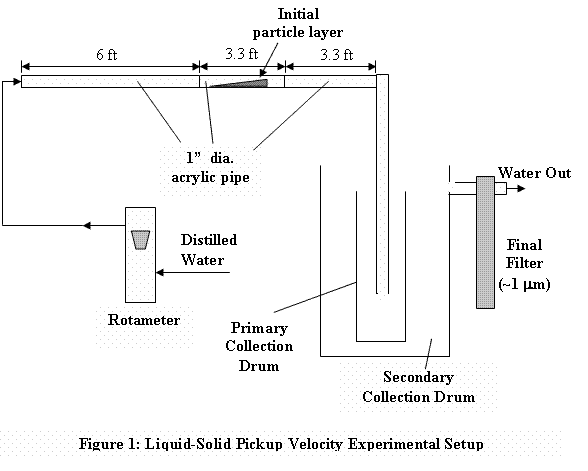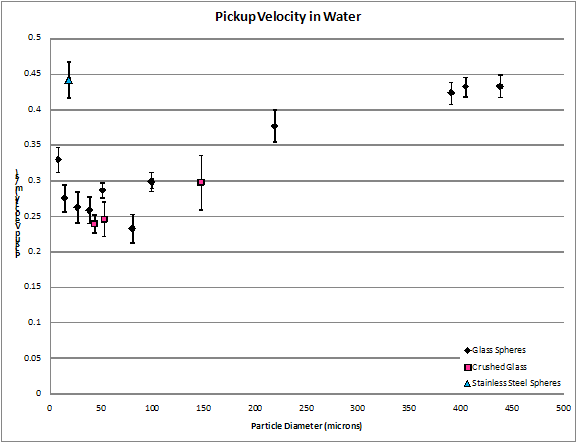

44508-G9
Effect of Particle Properties on Particle Entrainment in Liquid Flow
Pickup velocity, or the velocity required to pick up a particle from rest by a flowing fluid, has applications in many fields, such as environmental, biomedical, chemical, and microfluidic processes. Pickup velocity is a function of many variables, including the properties of the entraining fluid. Several authors have investigated pickup velocity for a variety of materials, but no one has compared pickup velocity data for liquids and gases. Since much of the published data has been collected using a variety of methods, the data cannot be directly compared. This project is related to the previous work of the PI, where the effects of particle shape, particle size, and electrostatic behavior on pickup velocity by an air stream were investigated1. To study the effect of fluid properties, the experiments were repeated in a similar system with distilled water as the carrier fluid. By using a liquid rather than a gas as the carrier fluid, several forces acting on the particle are affected, resulting in a shift in pickup velocity. Electrostatic forces and liquid bridging forces present in gas-solids systems are dampened with the presence of a continuous liquid phase, and a much larger buoyancy force due to the increased fluid density is also present in a liquid-solid system. Therefore, it was hypothesized that the pickup velocity is less in a liquid system than in a gas system.
In this project, the experimental setup and procedure is similar to the one used previously, but slightly modified to accommodate the presence of a liquid. Figure 1 shows the experimental setup used to measure pickup velocity. To date, the effect of particle size, particle shape, and particle density on pickup velocity have been investigated for the liquid-solids system. Glass spheres (Mo-Sci Corp., Rolla, MO) from 7 mm to 440 mm in diameter were used, and the data show that a minimum pickup velocity exists for changing particle size (Figure 2). This is expected because particle entrainment is dominated by inertial forces for larger particles, while smaller particles require higher fluid entrainment velocities due to enhanced interparticle forces. In gas-solids systems, the pickup velocity reached a minimum value at approximately 40 mm, which is similar to liquid-solid system studied here. Comparison of these data with those previously collected for glass spheres entrained by air shows a much lower pickup velocity for the liquid-solid system, as anticipated (Figure 3).
We also investigated the effect of particle shape and particle density by measuring the pickup velocity of crushed glass and stainless steel spheres (Figure 2). Although the magnitude of the pickup velocity for crushed glass was not statistically different from glass spheres of the same size, the deviation from the mean value was greater. This is likely due to variations in particle packing during the experiments. Spheres always touch at one point, so variations are much less severe than for non-spherical particles which may have large differences in particle-particle contact area from one experiment to another. This was also seen in the gas-solids systems investigated earlier. In addition, the pickup velocity of the stainless steel particles was much higher than for their glass sphere counterparts. This behavior indicates that particle density dominates over electrostatic attractions in a water-laden environment, which is the opposite of what was seen in the gas-solids system.
Future work includes the development of non-dimensional parameters for these data in order to make them useful across a range of systems, and a refined pickup velocity model will be developed similar to the one previously published to account for changes in fluid properties.
1. K. Hayden, K. Park, and J. Curtis, “Effect of Particle Characteristics on Particle Pickup Velocity,” Powder Tech. (2003) 131(1):7-14.
Figure 2: Pickup Velocity of Various Particle Types in Water
Figure 3: Pickup Velocities of Glass Spheres by Water
and Air

